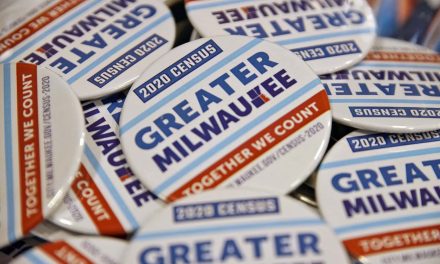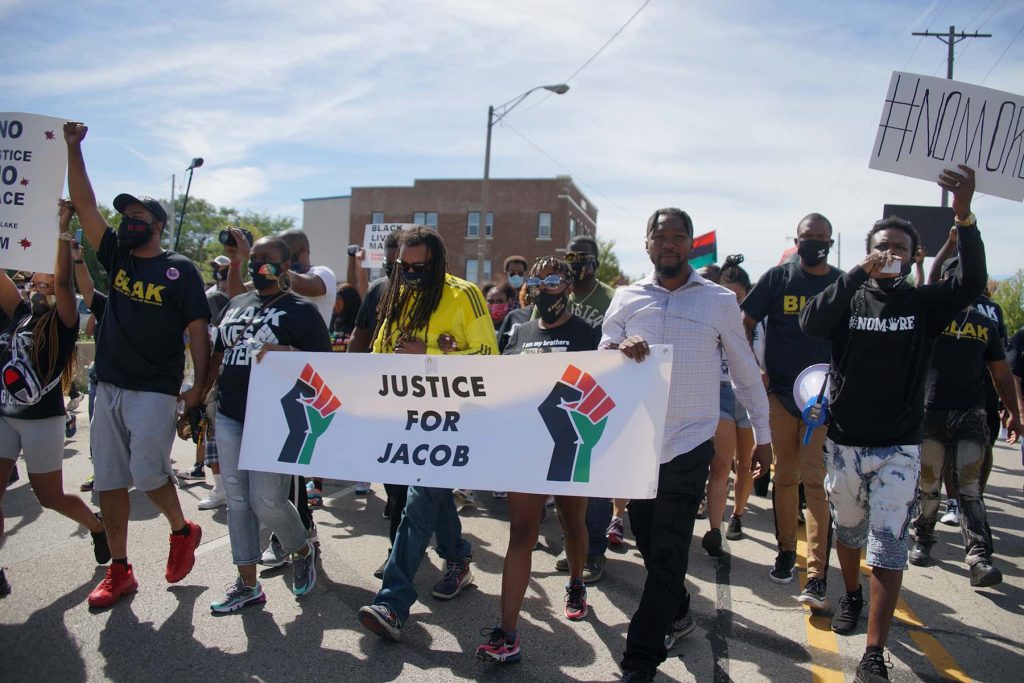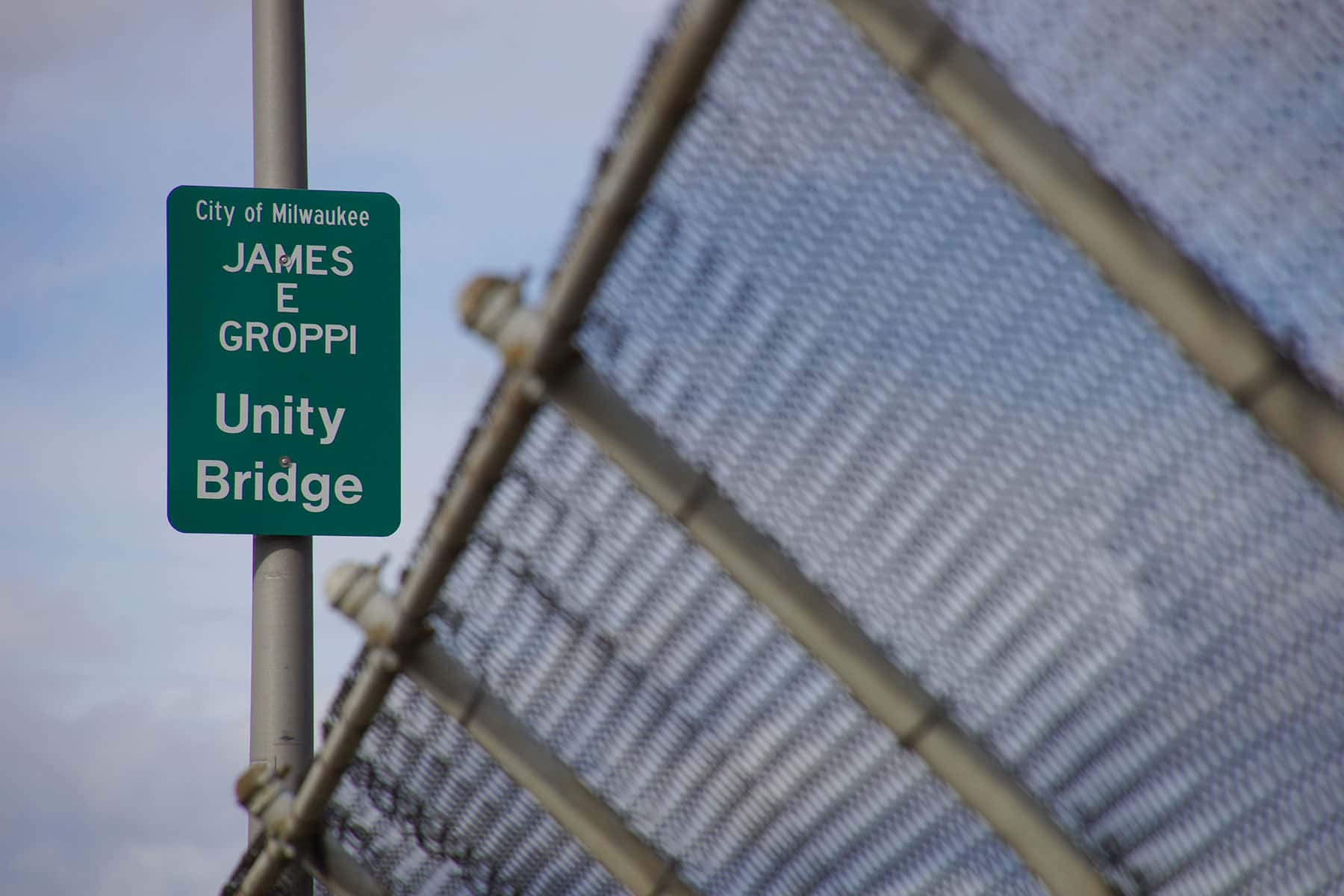
Jeanne Henry, a Milwaukee writer and a consultant, is calling for a permanent memorial to honor the historical importance of the fair housing marches that took place on the James E. Groppi Unity Bridge.
While we keep shaking our heads on social media at the persistent inaction in Congress, the members have managed to recognize a group of people who changed the course of America’s history for the better. On Feb. 24 they awarded the Congressional Gold Medal to the Foot Soldiers 1965 March from Selma to Montgomery for Voting Rights.
After almost 50 years it’s time to honor our local civil rights heroes with a permanent memorial that recognizes the historical importance of the fair housing marches that took place on the James E. Groppi Unity Bridge.
A Congressional Gold Medal is the highest civilian award given by the U.S. Congress. The Foot Soldiers were awarded this medal in part for their bravery facing violent beatings from state and local authorities as they crossed the Edmund Pettus Bridge. The medal also is a recognition of the marchers’ influence on history and how their efforts to register African-American citizens to vote accelerated the passage of the Voting Rights Act of 1965.
Congressional Gold Medals are designed and struck by the U.S. Mint and ceremoniously presented at the Capitol’s Emancipation Hall. Each becomes part of the Smithsonian Congressional Gold Medal traveling exhibit, and bronze replicas are issued for sale to collectors and the public. In addition to the foot soldiers, other civil rights recipients include Rosa Parks, Dr. Martin Luther King, Jr., Coretta Scott King and the attorney and plaintiffs in Brown vs. Board of Education.
A Congressional Gold Medal is a big deal and it is permanent.
Next year will mark the 50th anniversary of the 1967 fair housing marches that solidified Milwaukee’s role in the civil rights movement. The NAACP Youth Council and its advisor, Father James E. Groppi, led 200 marches across the bridge for the right to live anywhere in the city regardless of race. Their hope was to bring attention to unfair housing policies and practices that resulted in the segregation of the growing African-American population in overcrowded, substandard conditions. Just like the foot soldiers, Milwaukee’s marchers were also subjected to brutality as they crossed the bridge, which was a symbol of racial division.
The marches furthered the efforts of Vel Phillips, the first African-American woman to be elected to Milwaukee’s Common Council, who introduced an open housing ordinance five years earlier only to have it unanimously voted down by her all-male, all-white peers over and over again.
Historians termed Milwaukee the “Selma of the North” due to the efforts of Phillips, Groppi and the NAACP Youth Council to influence adoption of anti-discrimination housing laws embedded in the Civil Rights Act of 1968.
So why is the only permanent memorial on the bridge a bronze plaque dedicated to the “16th Street Viaduct Redecking of 1986” recognizing Mayor Henry Maier and the Milwaukee Common Council members of the time?
In 1988, the viaduct was rededicated as the “James E. Groppi Unity Bridge” by the newly elected Mayor John Norquist, but nothing was forged in bronze or permanently affixed to the bridge. Under his predecessor’s term, the Common Council narrowly passed a resolution to rename the viaduct, only to have Maier veto it in 1987. The Milwaukee Journal called the mayor “petty,” while the effort to publicly acknowledge the work of a Catholic priest working toward racial equality split Milwaukeeans.
Under Norquist, a very small, green aluminum traffic sign was posted at each end of the bridge designating the name change, but its impermanence continues to reflect the city’s divided sentiment to this day — 29 years later.
So here we are stuck with this odd tale of two signs on the north entrance of a busy bridge — Groppi’s aluminum sign and Maier’s glorious dedication to infrastructure repairs, cast in bronze. I wonder what the Marquette University students passing by both signs on their way to the athletic fields think, or the Potawatomi employees on their way to work? Father Groppi’s Unity Bridge still sees its fair share of foot traffic and I wonder what conversations the commemorations spark?
I think it’s time for another public conversation about the legacy of the fair housing marches in Milwaukee and what might be a more fitting tribute 50 years later. Will the most unproductive Congress in this nation’s history outclass Milwaukee again and pass legislation honoring our heroes with the permanence of metal before we do?
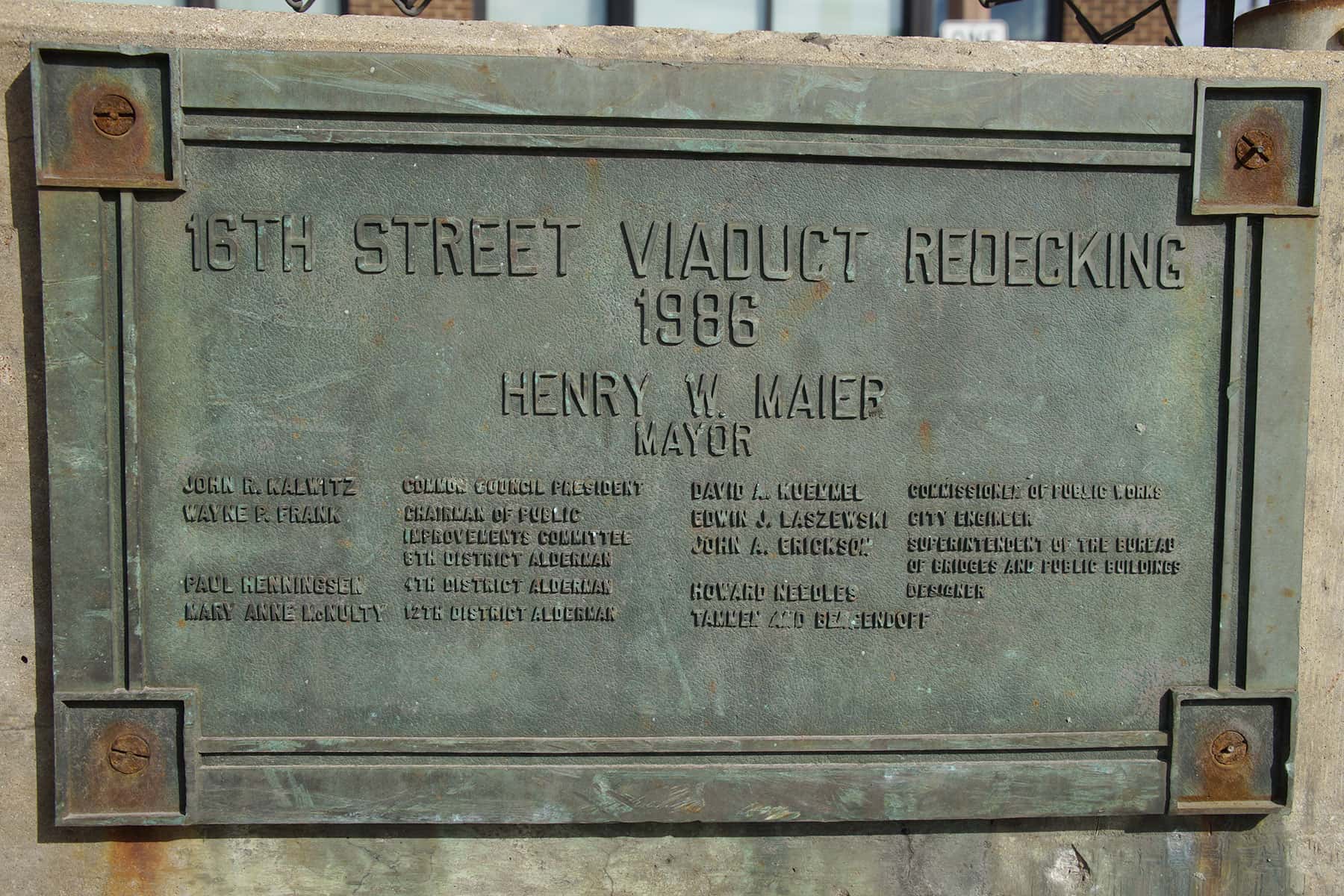
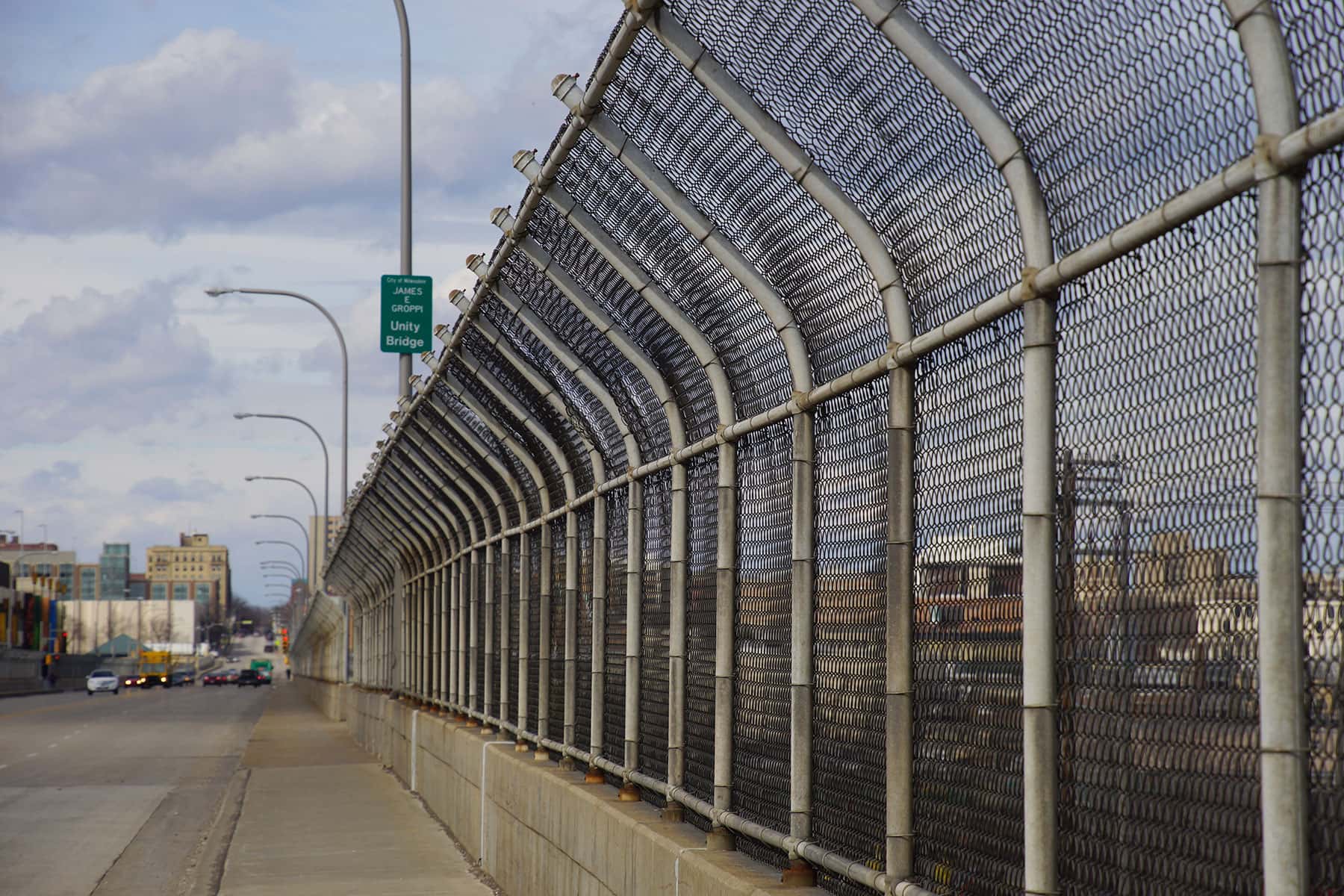
Jeanne Henry
Originally published on the Milwaukee Neighborhood News Service as A tale of two signs

